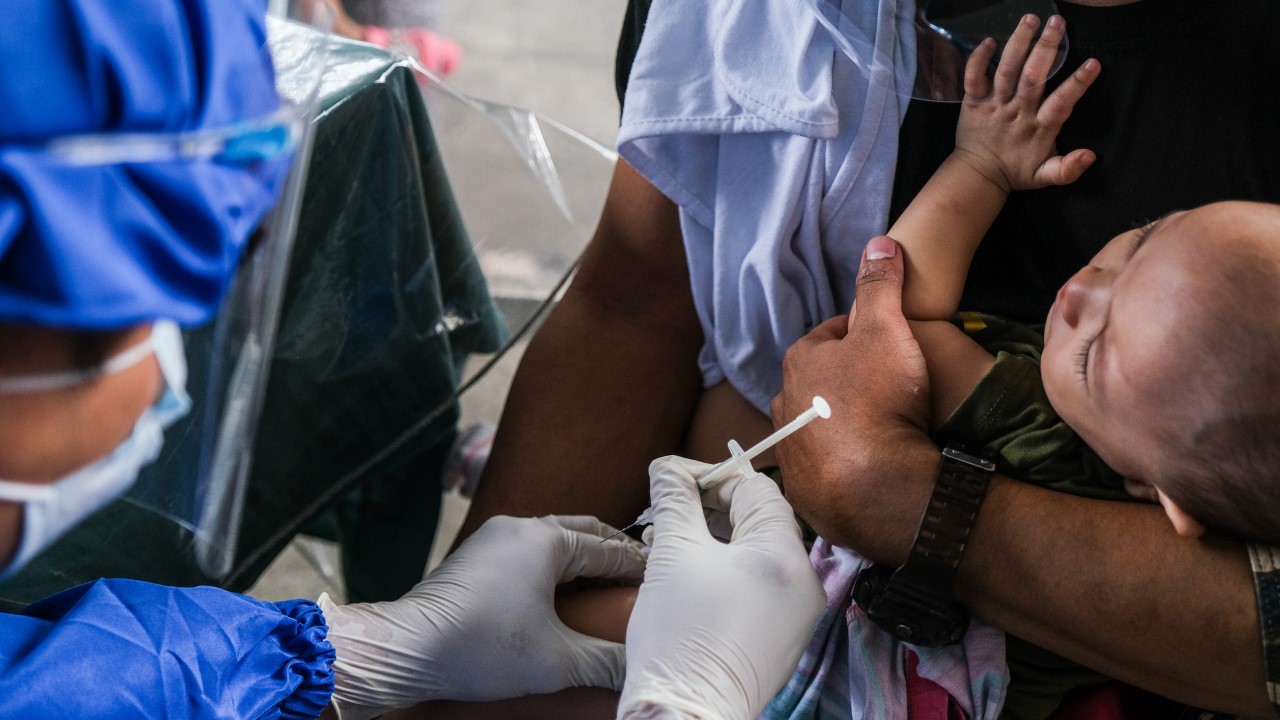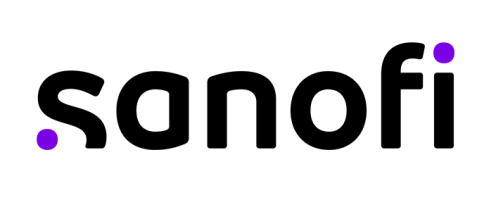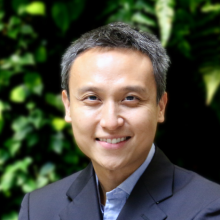Building Vaccine Confidence through AI-Powered Insights

The World Health Organization has recognized vaccine hesitancy as one of the top 10 global threats to public health. Photo credit: ADB.
Using technology like artificial intelligence to gather data and insights can ensure the right content around vaccinations reaches the right audience, at the right time.
This article is published in collaboration with Sanofi.
Vaccinating an individual throughout all life stages, from pregnancy, infancy, childhood, adolescence, and adulthood to old age, is one of the most successful and cost-effective public health interventions. Life-course immunization reduces the severity of communicable diseases, prevents future illnesses from arising, and protects communities against infectious diseases. It also helps to reduce the burden on healthcare systems.
The current state of vaccine uptake in Asia–Pacific
Various factors influence the uptake of vaccines across the life-course, such as effective national immunization policies, access points, awareness, and confidence in vaccines. Vaccine confidence plays a key part in driving the uptake of vaccines across the life-course.
In 2019, the World Health Organization (WHO) recognized vaccine hesitancy as one of the top 10 global threats to public health. There have been continuous efforts by the WHO and governments to communicate the benefits of vaccination and improve vaccine confidence.
Insights from the Vaccine Confidence Framework, a collaboration between the Lee Kuan Yew School of Public Policy, Lloyd’s Register Foundation Institute for the Public Understanding of Risk, and Sanofi to deploy a social listening tool to gauge public sentiment about vaccines, revealed that during the coronavirus disease (COVID-19) pandemic, conversations around vaccines have become more positive over time.
However, positive vaccine conversations or confidence does not automatically translate into vaccine uptake beyond COVID-19 and across the life-course. Vaccine uptake rates beyond childhood remain a challenge in many countries across Asia Pacific. Taking another common infectious disease, flu, as an example, the uptake rates of flu vaccines in older adults in Taipei,China; Thailand; and Singapore are 49%, 34%, and 14% respectively. While these figures are some of the highest uptake rates in the region, they remain far below the target set by WHO at 75% to ensure communities can live and age healthily.
To improve the lives of people, their families, and communities, and support sustainable healthcare systems, driving life-course immunization as part of a prevention strategy is essential. While addressing the many factors, such as accessibility, communications, and infrastructure, to improve vaccine uptake is essential, one key factor to prioritize is vaccine confidence.
Plugging the gap between vaccine confidence and uptake
Vaccine confidence is a complex topic and individuals may have varying degrees of confidence, ranging from accepting all types of vaccines to refusing some types of vaccines.
Many factors influence the lack of vaccine confidence including beliefs, attitudes, and sources of information. For example, some individuals may have genuine concerns about the safety and efficacy of vaccines, as they feel overwhelmed by the vast sources of information with diverse viewpoints, many of which are often unverified information. The level of trust toward vaccines changes as individuals obtain new information over time.
Traditionally, vaccine confidence has been measured through annual research or surveys by assessing the public as a homogenous group of individuals segmented by age, gender, and socioeconomic status. However, this type of measurement may not be able to capture the evolving sentiments of the public or the fast-changing traditional media and social media landscape as shown during COVID-19. Vaccine confidence is complex and context specific. To be able to truly reflect current vaccine confidence, we need to consider the wide variability of factors such as vaccine safety, access to verified and expert advice, and vaccine effectiveness, among others.
Toward a better understanding of vaccine confidence
Powered by artificial intelligence, the Vaccine Confidence Framework captures vaccine sentiments in mainstream and social media channels across Asia–Pacific.
While vaccine confidence is multi-layered and complex, mainstream and social media are useful platforms to provide snapshots of the type of conversations driving perceptions in specific groups of people. Mainstream media continues to be an important and trusted source of information. In addition, the exponential rise and reliance on social media for information and sharing forms a key data source for vaccine confidence.
Insights from the Vaccine Confidence Framework enable the design of practical solutions to address any specific concerns around immunization in future public health campaigns, as well as drive effective advocacy and policy discussions to improve immunization uptake across the life-course. For example, older adults may be less vaccine confident as general vaccines are not mandatory, or they are worried about the adverse and long-term safety of these vaccines against their pre-existing conditions. Through this insight, we can develop strategies to effectively communicate the benefits of life-course immunization and dispel any concerns for the target audiences.
Although the COVID-19 pandemic has increased vaccine awareness and confidence overall, this does not automatically translate into uptake for other vaccine-preventable diseases along the life course. It is imperative to gain a timely understanding of the public’s attitude toward vaccination and develop tailored public health campaigns to address their concerns. By using timely data and insights, we can ensure the right content around vaccinations reaches the right audience, at the right time. This ultimately helps to build better vaccine confidence and increase consideration for its uptake.
Given the attention on vaccination is at an all-time high, it is opportune for policymakers, researchers, and other stakeholders to leverage the momentum to understand the behavioral drivers to improve the uptake of vaccines beyond COVID-19 to make progress toward the target set by the WHO for life-course immunization.
As governments across the world rethink the way healthcare is delivered to improve efficiency, resilience, sustainability, and resource usage, it is not only enough to communicate the value of vaccination and improve access; we also need to understand the behaviors that drive vaccine confidence. The Vaccine Confidence Framework helps us to be one step closer to this goal.

Reuben Ng
Assistant Professor, Lee Kuan Yew School of Public PolicyReuben Ng is an assistant professor at the Lee Kuan Yew School of Public Policy and lead scientist at the Lloyd’s Register Foundation Institute for the Public Understanding of Risk. He is a behavioral and data scientist trained at the National University of Singapore, Oxford, and Yale. He spent 16 years in government, consulting, and research. His work has been featured in leading news outlets including The New York Times, The Washington Post, Forbes, CNN, The Guardian, The Straits Times and Lianhe Zaobao.

Ada Wong
Asia Public Affairs Lead, SanofiAda Wong is currently with Sanofi as Asia public affairs lead in driving public affairs strategy and implementation across the region. Prior to joining Sanofi, Wong was head of public affairs and communications at FrieslandCampina, one of the world’s largest dairy companies, where she led the development and implementation of the company’s public affairs and communications strategy across the region.

Sanofi
Sanofi is an innovative global healthcare company, driven by one purpose: we chase the miracles of science to improve people’s lives. Our team, across the world, is dedicated to transforming the practice of medicine by working to turn the impossible into the possible. We provide potentially life-changing treatment options and life-saving vaccine protection to millions of people globally, while putting sustainability and social responsibility at the center of our ambitions.



